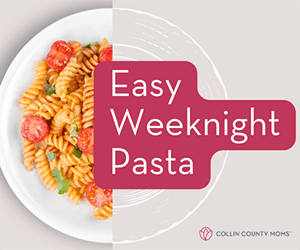Disclaimer :: Though I am a registered dietician, this is my experience and opinion about heart health. Please consult your doctor if you have any questions or concerns regarding your own health.

Two years ago, my mom had labs drawn for life insurance. A week later, she received surprising results: She had elevated cholesterol. A work-from-home job and a pandemic changed my mom’s lifestyle, and likewise, her heart health.
My mom is a common story. A busy woman who puts herself last. She knows how to be healthy, but her execution lags. It’s not because she doesn’t care though.
In my mom’s case, early detection was key. Luckily, she has a registered dietitian handy (me) and was open to learning. With my support, she prioritized lifestyle changes, and a year later, her labs were great!
Why Does Heart Health Matter?
Heart disease is the number one cause of death in women. Risk factors like smoking, diabetes, stress, and family history increase the risk of heart disease for women more than men. Pregnancy complications and menopause also increase risk.
Like the heart to the body, moms are the heart of the home. They keep households running. We plan, schedule, shop, clean, cook, play, sing, chauffeur — the list is infinite. For us to care for others, we must first care for ourselves.
In my November article, I encouraged you to be “that mom” during the holidays. The holidays may be over, but I still want you to be a priority.
>> RELATED READ :: Why I Wear Red :: Go Red for Women <<
Where to Start
Heart health may seem complicated, but it can be as simple as one small change at a time.
The first step is to know your numbers to identify issues early and create a plan.
Ask your doctor to show you target ranges for each of these labs. Here’s a cheat sheet of important labs to track:
- High-density liptoprotein (HDL) is known as “good” cholesterol because it picks up excess cholesterol for removal. Higher level is associated with a lower risk of heart disease.
- Low-density liptoprotein (LDL) is known as “bad cholesterol” because it can build-up in arteries. You want this number to be low.
- Triglycerides can cause arteries to harden and thicken. These are a different type of fat than cholesterols. You want these numbers to be low, too.
Lifestyle affects each number differently. Here are some examples:
- Moderate intensity exercise is the best way to increase HDL.
- LDL is impacted most by saturated and trans-fat intake, not cholesterol.
- Triglycerides are associated with excess calorie and carbohydrate intake.
- Smoking negatively impacts HDL, LDL, and triglycerides.
Your numbers and your doctor will help you figure out which steps to take. If your HDL comes back low, exercise can help. If your LDL or triglycerides come back high, focus on a diet with healthy swaps and balanced meals. And no matter what, it’s healthy to limit alcohol and never smoke.
Dietary cholesterol does not increase cholesterol levels for most. In fact, your body produces all the cholesterol you need. When you consume cholesterol, your body adjusts production to keep blood levels in a desired range.
What does this mean? You can eat egg yolks. Egg yokes contain protein, fat, and fat-soluble vitamins. The fat included promotes absorption of the fat-soluble vitamins, including Vitamin D. Double win!
Tip: If you want one-on-one support and personalized recommendations, schedule an appointment with a registered dietitian. Many health insurance plans include RD appointments as preventative care, and all have coverage with a medical diagnosis.

5 Ways to Improve Heart Health
So, why emphasize a healthy lifestyle if our body adapts? Heart health is affected by many things and the body does not “magically” overcome them all. Here are five actionable tips to improve your heart health so you can be the heart of the home.
- Increase physical activity. Aim for 150 minutes of cardio per week with an elevated heart rate. Strength training two to three times per week is a good compliment. Combine activities to fit your schedule. Boot camp style workouts, step class, and walking on an incline after weightlifting are great options.
>> RELATED READ :: Training for a 5K with Your Baby <<
- Read labels. Overall, you want to reduce added sugar and saturated and trans-fats. All three are listed on the nutrition facts panel and frequently found together in heavily processed foods, including baked goods and sweets. Check out my article for five easy kitchen swaps.
- Balance macros. Focus on adding to your plate and adjusting portions. Meals should include protein, fiber, and healthy fat. Fiber can come from fruits, veggies, and grains. Aim for at least 20 to 30 grams of protein at meals, including breakfast.
- Increase Omega-3 intake. Omega-3 fats are positively associated with heart health in many ways. Sources include fatty fish, walnuts, flaxseed, and soybeans. Aim for two servings of fatty fish per week (if you eat fish). Reduce your intake of fried foods, which contain saturated and trans-fats.
- Manage stress. This may be the hardest item on the list. Evaluate your current stress level with a critical eye and let go of what doesn’t serve you well (maybe even sing it like Elsa). Try one new stress-management technique at a time. Keep things simple and be consistent. Read my article to learn about my favorite journaling tool. I’m proud to say I’ve stuck with it!
If you have questions, ask them below!













